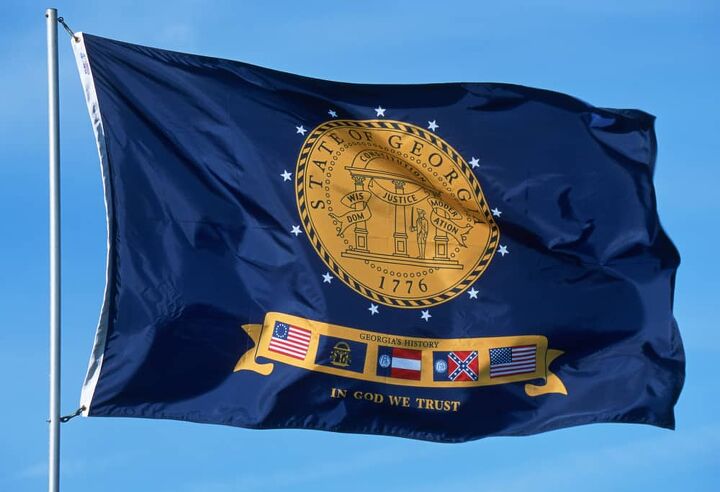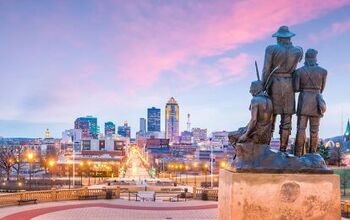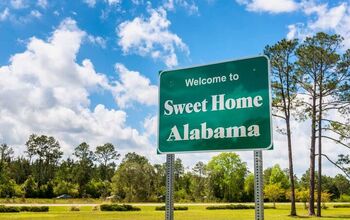The 15 Fastest Growing Cities In Georgia

When looking for diversity in everyday life, one can look no further than the state of Georgia. The Peach State is defined by various landscapes, flora, and history. Since it was the last and southernmost colony of the original thirteen colonies across the state, Civil War history can be found and how the cities have evolved.
According to statistics, the fastest growing cities in Georgia include Chamblee, Braselton, Norcross, Port Wentworth, and Clarkston. Each city has a growth rate that ranges from 68.8% to 199.8%, which has been measured over an entire decade. Other fast-growing Georgia cities are Holly Springs, Flowery Branch, Pooler, Woodstock, Decatur, Suwanee, Sugar Hill, and Richmond Hill.
When conducting research, I was surprised not to see Athens, GA, on the list. However, we have an exciting roundup to share with you. Let’s dive in!
How The Fastest Growing Cities Were Determined
When a census is carried out, determining the fastest growing cities makes routinely looking at population data simple. Looking at the statistics of 127 cities with over 5,000 citizens over the past ten years is how this list was created.
Specific statistics include population from the previous decade, current population, and the growth rate during the decade. The growth rate is figured out simply with a formula:
[(Current Population – Previous Population) / Previous Population] x 100
Fastest Growing Cities in Georgia
Below we’ve listed some of the fastest-growing cities in Georgia, along with some information on each city as well as statistics.
1. Chamblee
- Current Population: 29,232
- Population in 2010: 9,751
- Growth Rate: 199.8%
Chamblee was known in the late 19th century for its dairy farms, and the only thing that made this area connect to the rest of Georgia was the railroad.
The area had a crossroads junction that served two purposes: transporting passengers from Atlanta to Charlotte, North Carolina, and taking workers and goods from a factory in Roswell to Atlanta.
The junction was named Roswell Junction, and settlements started to occur in the area. The United States Postal Services wanted to set up an office in the area, but the town was too close to the City of Roswell. So, the name, Chamblee, was randomly selected from a list of petitioners.
In 2010, it had a population of 9,751. As of the time of writing, the current population is 29,232. This equates to a growth rate of 199.8%.
2. Braselton
- Current Population: 11,452
- Population in 2010: 6,107
- Growth Rate: 87.5%
Harrison Braselton was a poor farmer that married the daughter of a wealthy plantation owner. In 1884, he built a home on 786 acres of land he purchased, later called Braselton.
Braselton was incorporated as a town in 1916. It is approximately forty miles northeast of Atlanta and spans over four counties, Barrow, Gwinnett, Hall, and Jackson, in Georgia.
In 2010, the population of Braselton was 6,107 but grew to 11,452 within 12 years. That is a growth rate of 87.5%
Today residents enjoy parks, including Thompson Mills Forest, Georgia’s official state arboretum. They also take pride in the preservation of their town’s history, including the Braselton Brothers store.
3. Norcross
- Current Population: 16,458
- Population in 2010: 9,029
- Growth Rate: 78.7%
Norcross can be found in western Gwinnett County, Georgia, about twenty miles northeast of Atlanta. Purchased in 1869 by John Thrasher, an Atlanta entrepreneur, the town was nicknamed “Atlanta’s Summer Resort.” Visitors would come to Norcross to escape the city, whereas residents went to the town for work.
When the railroad was constructed through town, it brought new development for the historic city, which was the first to be listed on the National Registry of Historic Places.
The railroad is still used today to enhance the town and some historic homes and parks. The city holds several annual events and loyal residents love that they can call this town home.
In 2010 the population of Norcross was 9,209 and grew to 16,458 within the past 12 years. This is a growth rate of 78.8%
4. Port Wentworth
- Current Population: 8,463
- Population in 2010: 4,920
- Growth Rate: 72.0%
Port Wentworth was founded in 1733 and was made up of several colonial plantations, including Mulberry Grove. This is where Eli Whitney invented the cotton gin. This town can be found in the northern corner of Chatham County and is part of the Savannah Metropolitan Area.
Local industries are known for producing lumber, Savannah Gray Brick, and pure cane sugar. In 2008, Port Wentworth made national news when there was an explosion at the historic Dixie Crystals sugar plant.
It is a town full of history that caters to everyone, from exploring plantations to free attractions like the Savannah National Wildlife Refuge.
In 2010, Port Wentworth only had a population of 4,920. As of 2022, the population is 8,463. This is a growth rate of 72.0%.
5. Clarkston
- Current Population: 12,750
- Population in 2010: 7,555
- Growth Rate: 68.8%
“The Ellis Island of the South” is the nickname given to Clarkston. It has always been a town noted for its diversity. Residents were moving away from Atlanta, and Clarkston was a city that offered a broad housing market with convenient access to transportation.
Back in the early 1990s, it was determined the best place for refugee resettlement. Since then, they have resettled more than 37,000 refugees.
The growth of this town is also based on two cities being annexed in 2015 and 2016. This little town has a beautiful walking and biking area and a recently restored park with fishing and tennis courts.
In 2010 the population of Clarkston was 7,555 and grew to 12,750 within the last decade. That is a growth rate of 68.8%.
6. Holly Springs
- Current Population: 12,509
- Population in 2010: 8,354
- Growth Rate: 50.1%
A lot of cities in the south suffered greatly after the Civil War, and Holly Springs was one of them. Everything began to turn around in the late 1800s when the railroad was put in through the town. This made it possible for local industries to thrive. The railroad made this little town thrive, and it became a desirable place to call home.
Holly Springs was incorporated in 1906 and was named for the holly trees founded at the town’s original site. It is located in Cherokee County, Georgia, just 36 miles north of Atlanta.
Holly Springs had a growth rate of 50.1% in the last decade. The population in 2010 was 8,354. Currently, the population is 12,509.
7. Flowery Branch
- Current Population: 7,497
- Population in 2010: 5,096
- Growth Rate: 47.1%
Anaguluskee is a Cherokee Indian word meaning “Flowers on the Branch” and is how the town initially got its name. The site was originally a trading post for the American Indians, and there were very few white settlers in the area.
By the late 1800s, the railroad would route through Atlanta to Charlotte, North Carolina. The town became a hub of the northeast Georgia cotton market, and hundreds to thousands of cotton bales and furniture were shipped to the country from Flowery Branch.
In the early 1900s, the cotton demand was low, and the town went through hard times. However, the area’s loyal residents started to put together tourist attractions and events to encourage people to visit the city.
The population of Flowery Branch in 2010 was 5,096. This little town had a growth rate of 47.1% within the last decade, bringing the current population to 7,497.
8. Richmond Hill
- Current Population: 12,720
- Population in 2010: 8,890
- Growth Rate: 43.1%
This town’s history belongs to industrialist Henry Ford. He visited the town, then called Ways Station, and created his winter home. He eventually owned over 80,000 acres and built Ford Farms on the banks of the Ogeechee River.
This was the site of the Richmond Plantation, which was burnt down during the Civil War. When the town suggested renaming Ways Station after Ford, he declined, and instead, the city was named for the plantation his home was built on.
Ford was responsible for the growth of this town and created many public buildings and a chapel, many of which have been converted into museums and established churches, respectively.
Richmond Hill had a population of 8,890 in 2010, which grew to 12,720 for the current number. This reflects a growth rate of 43.1%.
9. Pooler
- Current Population: 23,858
- Population in 2010: 16,683
- Growth Rate: 43.0%
Located northwest of Savannah in Chatham County, Georgia, Pooler is considered part of the Savannah metropolitan area.
It was initially a railway stop during the Civil War and was named Pooler’s Station, after one railroad company, Robert Pooler. It was also the location of the peaceful surrender to the Union officers during the Civil War.
This little town has gone through many growth and change since the Civil War. It is the center of commercial development within the county and has been prosperous in drawing large companies to the area.
Companies include equipment manufacturer JCB and Blue Force Gear, maker of tactical gear. This, along with its small-town feel and low crime rates, has brought more residents to the area.
Pooler had a growth rate of 43.0% within the last decade. Currently, the population is 23,858, but in 2010 it was only 16,683.
10. Woodstock
- Current Population: 31,437
- Population in 2010: 22,027
- Growth Rate: 42.7%
A city in Cherokee County, Georgia, Woodstock is part of the Atlanta metropolitan area. It was originally a stop on the Louisville and Nashville Railroad system.
Woodstock Depot was built in 1912 to accommodate the growth of the town. The railroad transported supplies like cotton and rope to parts of the country. The city was named in 1897 after a historical novel, Woodstock, written in 1826 by Walter Scott.
Woodstock had a population of 22,027 in 2010, which grew to the current number of 31,437. This reflects a growth rate of 42.7%.
Over the years, the town has continued to grow with the times, and although the historical landmarks may only be a memory, they pride preservation.
In 1997 they celebrated their centennial with a city park development, parades, and a history book publication.
11. Suwanee
- Current Population: 20,907
- Population in 2010: 15,343
- Growth Rate: 36.3%
Suwanee began as a Native American village about three miles southwest of the current downtown area, on the banks of Suwanee Creek, which flows into the Chattahoochee River.
A large Native American village flourished on both sides of the river for hundreds of years before establishing the Town of Suwanee.
Suwanee had a land area of about 3.1 square miles when it was incorporated in 1949. Suwanee now encompasses nearly 7,000 acres or 10.8 square miles. And the city’s population has grown from 615 in 1970 to more than 19,500 today.
Comparing relatively recent numbers, in 2010, the population was 15,343 and currently is 20,907. This reflects a growth rate of 36.3%.
12. Grovetown
- Current Population: 15,152
- Population in 2010: 11,224
- Growth Rate: 35%
Many wealthy and influential Augusta residents spent their summers in Grovetown, escaping the heat and disease that plagued the city’s swampy river areas. They relied on the old “Picayune” train’s frequent service to commute.
The old Rosland Hotel, later renamed the “Eagle,” was constructed in the 1880s. Its massive rotunda was frequently used for church functions, suppers, parties, and dances. The hotel was later converted into a boarding house and burned down in the 1970s. The Church of Christ now stands on that spot.
In 2010 the population was 11,224, but as of today, it has grown to 15,152. This reflects a 35% growth rate just within the last decade.
13. Sugar Hill
- Current Population: 24,617
- Population in 2010: 18,484
- Growth Rate: 33.2%
Sugar Hill is steeped in history, from its farming, leather tanneries, and gold mining industries to its military veterans, first schools, and churches. The city was founded in 1939. The Sugar Hill Historical Preservation Society (SHHPS) was founded 77 years later, in 2016.
TODAY, the SHHPS exists to discover, promote, and preserve Sugar Hill’s rich history. Since its inception, the Society has collaborated with the city and its residents to discover gold mines, maintain historic gravesites, document the area’s history, and make it all available to the public.
In 2010 the population of Sugar Hill was recorded at 18,484 and grew to 24,617 just within the last decade. That is a 33.2% growth rate.
14. Decatur
- Current Population: 25,696
- Population in 2010: 19,630
- Growth Rate: 30.9%
The development of Decatur’s city center, commercial areas, and neighborhoods may be the best way to understand the city’s evolution. The various city districts and communities, each with their distinct character, have merged into the vibrant and diverse modern-day Decatur.
Decatur’s commercial and residential development grew outward from its commercial center, as it does in most cities. Small businesses, commercial, and retail enterprises began to sprout up in buildings centered on the Square. Regrettably, none of the original historic structures have survived.
In 2010 the population was 19,630. Due to the 30.9% growth rate, the current population is now 25,696 and is expected to continue growing.
15. Perry
- Current Population: 17,894
- Population in 2010: 13,737
- Growth Rate: 30.3%
Perry was founded in 1823 and named after Oliver Hazard Perry, a hero of the War of 1812. Perry started as an antebellum industry with gristmills, sawmills, and cotton gins.
This town has transformed from a small town to a vibrant and growing community of over 19,000 people. This happened by capitalizing on its proximity to Robins Air Force Base, excellent schools, unique downtown, high quality of life, and location.
This is truly where Georgia comes together, as a hub of state and federal highways, the home of the Georgia National Fairgrounds & Agricenter. Also, with events like the Dogwood Festival, Food Truck Fridays, the Perry Music Festival, and the annual Perry Buzzard Drop.
In 2010 13,737 people called Perry their home, and that number grew to 17,894 currently, reflecting a growth rate of 30.3%.
Wrapping It Up
The cities that saw the highest growth rates were where people flocked to. Whether it’s museums and fairs, or the more up-and-coming industrial towns, there has been a lot of growth in Georgia cities. These numbers are only expected to double within the next decade and a half.

Heather is a passionate writer who loves anything DIY. Growing up, she learned everything from home repairs to design, and wants to share her tips with you. When she's not writing, she's usually hiking or searching for her next DIY project.
More by Heather Robbins



























